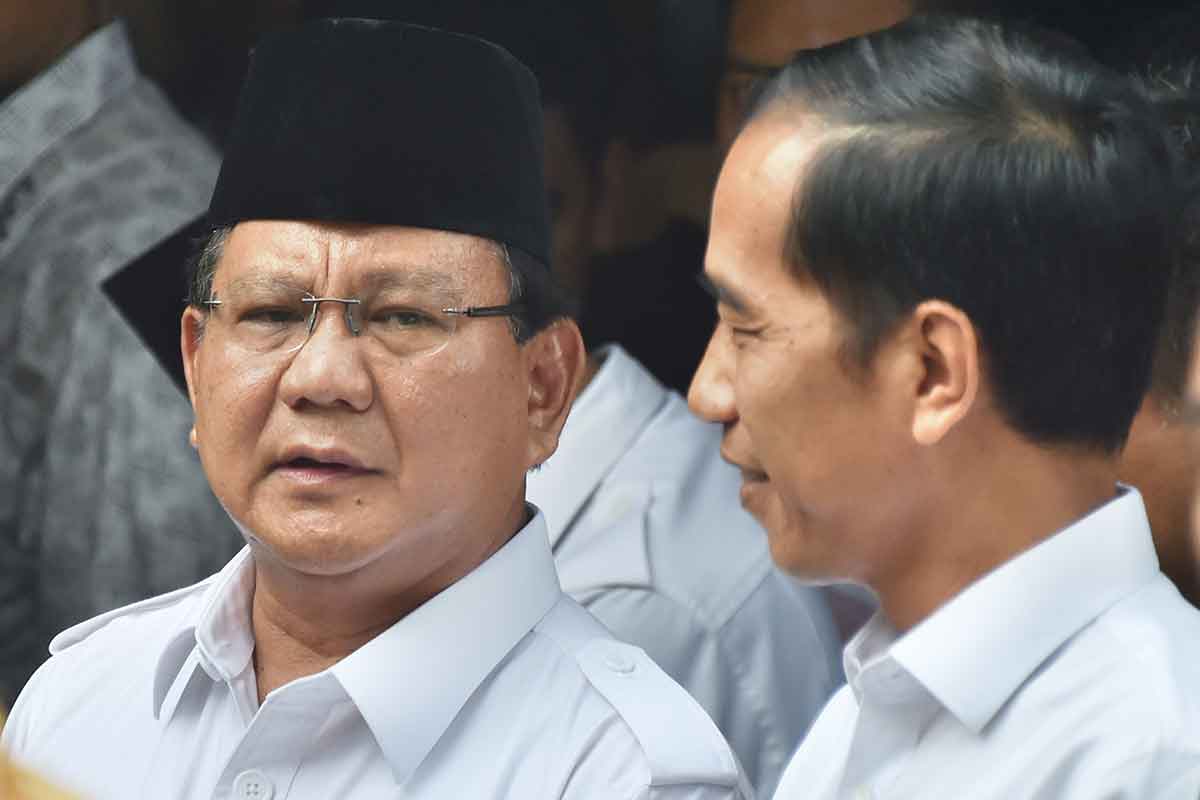Almost 200 million Indonesian voters head to the polls on Wednesday after a long presidential election campaign dominated by economic policy issues.
The eventual winner – the incumbent President Joko Widodo or former general Prabowo Subianto – will face significant challenges in steering Southeast Asia’s biggest economy. Widodo is making a big infrastructure push and raising social welfare spending, while his challenger is promising tax cuts and import curbs to spur domestic industries.
Here’s a look at some of the key economic challenges that a new administration will face:
Boosting growth
Economic growth has averaged about five percent a year since Jokowi, as the president is known, took office in 2014, well short of the seven percent he targeted in his first term.
The current government is projecting growth of 5.3 percent this year and as much as 5.5 percent in 2020, which would be the fastest expansion since 2013. That may be challenging against a global backdrop of slowing world growth, unresolved United States (US)-China trade tensions and volatile oil prices.
The campaign team for Prabowo – as the opposition leader is known – has said his policies, including corporate and personal income tax cuts, would result in growth of about five percent over the first two years of a five-year presidential term and seven percent growth by the third year.
Job creation
The jobless rate is near a 20-year low of 5.3 percent, which looks good on paper, but hides a growing problem of underemployment. The number of people working less than 35 hours a week has been increasing, one of the reasons economists cite for lacklustre spending in the economy.
Almost 36 million people, near close to a third of the workforce, are classed as underemployed, according to official statistics.
Jokowi’s campaign says Indonesia needs to create 100 million jobs in the next five years in an economy where more than half the population of 260 million are under the age of 40.
Current account
The current account deficit, which last year widened to almost three percent of gross domestic product (GDP), remains a key vulnerability for the economy. It makes Indonesia reliant on foreign capital to fund its import needs, inflows that can be volatile as investor sentiment swings.
The deficit was one of the main reasons why Indonesia was targeted in an emerging market sell-off last year, triggered by rising US interest rates and a stronger dollar. The rupiah slumped more than five percent against the dollar in 2018, dropping to its lowest levels since the Asian financial crisis two decades prior, as investors pulled out of the nation’s stocks and bonds.
The rupiah has bounced back in 2019, helped in part by the central bank’s swift action in raising interest rates by 175 basis points and the US Federal Reserve’s shift away from policy tightening this year. The current account remains a risk though, and the government has imposed a number of measures to curb imports and spur exports to lower the deficit.
Data on Monday showing a second consecutive monthly trade surplus in March suggests the current account deficit probably narrowed in the first quarter. Economists surveyed by Bloomberg had predicted a US$177 million trade deficit in the month.
Foreign investment
Indonesia has been making slow progress in opening up its economy to foreign investors. Many are still waiting for authorities to overhaul the so-called negative investment list, which dictates levels of foreign ownership allowed in a host of sectors.
Foreign direct investment (FDI) dropped 8.8 percent in 2018, the first decline under Jokowi’s rule. The government’s tussle with Freeport-McMoRan Inc. over ownership of the world’s biggest gold mine also hurt sentiment.
Indonesia needs foreign investment to help pay for its development, including a massive infrastructure gap the World Bank Group has said would cost hundreds of billions of dollars to fix. The next government would have to convince foreign investors that Indonesia is open for business.
Cost of living
Inflation has come down steadily over the years, staying under five percent since 2016. With little price pressures in the global economy, inflation in Indonesia has slowed to a 10-year low of 2.5 percent in March. It’s forecast to remain inside the central bank’s 2.5 percent to 4.5 percent target band this year.
Despite the slowdown, voters continue to cite the cost of living as a key election issue, along with jobs. The government has managed to cap fuel prices ahead of the election, but a jump in oil prices this year will make that difficult to sustain.
Low inflation and the global shift away from policy tightening have fuelled calls for Bank Indonesia to start cutting interest rates after six hikes since May. Governor Perry Warjiyo remains cautious though, warning of risks in the global economy. - Bloomberg
